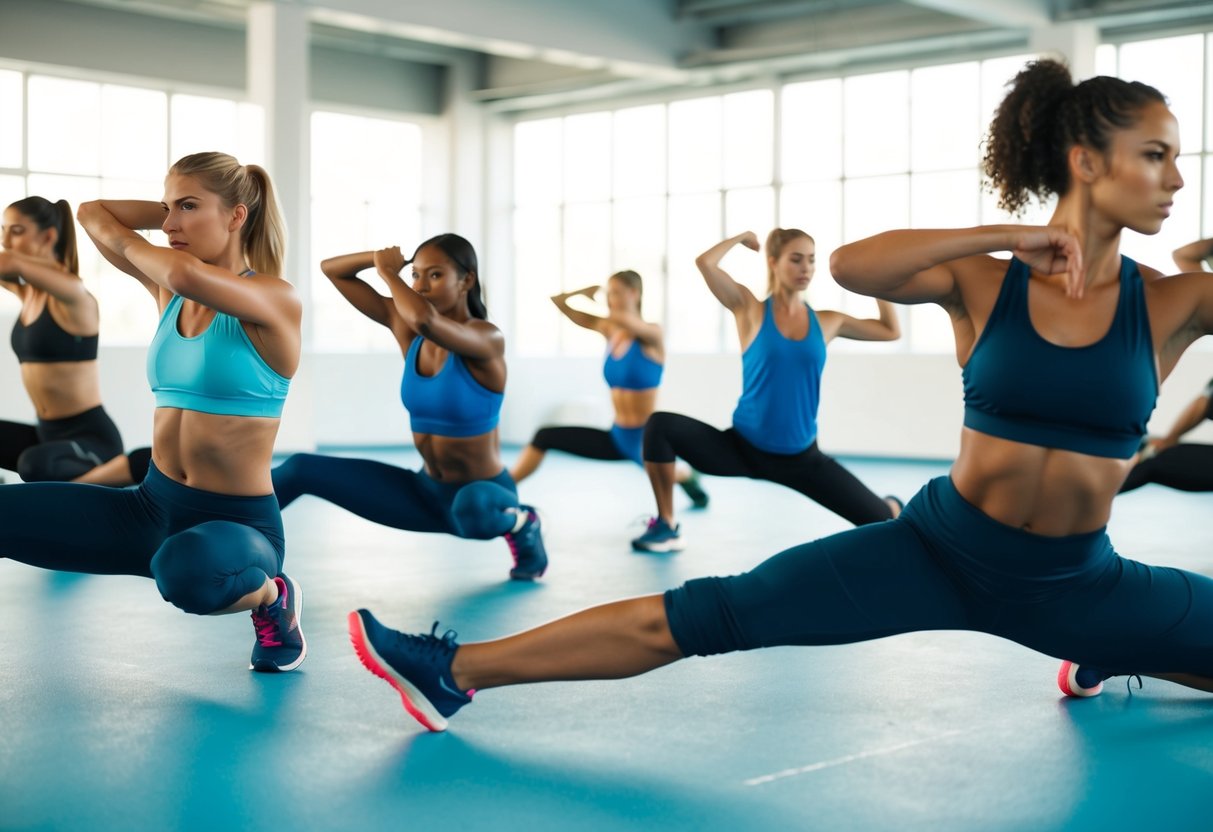
Essential Dynamic Warm-Up Exercises
Dynamic warm-ups are crucial in preparing the body for physical activity, enhancing flexibility, range of motion, and overall performance. They are structured to address key muscle groups, ensuring comprehensive activation for effective workouts.
Upper Body Activation
For efficient upper body warm-ups, arm circles are a staple. They enhance shoulder mobility and increase blood flow, preparing the muscles for more intense exertion. Begin with small circles to engage minor muscle groups, gradually transitioning to larger circles to extend the range of motion.
Incorporate dynamic stretches like high-arm swings. These involve swinging the arms back and forth dynamically, increasing shoulder flexibility. Then, add an exercise like tricep extensions, using a resistance band to target and activate the upper arms. This combination ensures that all major upper body muscles are ready for more demanding exercises.
Lower Body Activation
Lower body dynamic warm-ups focus on exercises like leg swings which target hip flexors and hamstrings. Executed properly, leg swings improve joint mobility and prepare the lower body for high-impact movements. Begin with forward and backward swings, maintaining a controlled motion to avoid excessive strain.
Follow up with lateral lunges, which engage the inner thighs and glutes. This exercise not only enhances lower body flexibility but also increases blood circulation to vital muscle groups. Adding dynamic calf raises, where the heels are raised in a continuous motion, also stimulates the lower legs and enhances balance, ensuring comprehensive lower body readiness.
Core and Stability Work
To ensure core activation and stability, exercises such as inchworms are highly effective. Starting from a standing position, the individual bends forward, reaches the ground, and walks the hands into a plank position before reversing the motion. Inchworms engage the core by stabilizing the body during movement.
Next, incorporate dynamic planks with shoulder taps. In this exercise, the core remains engaged while alternating hands touch opposite shoulders, promoting stability and balance. Conclude with standing oblique twists, which involve rotating the torso dynamically to engage the core and prepare for rotational movements required in various activities. This approach solidifies the core foundation and enhances stability for optimal performance.
Structure of a Dynamic Warm-Up Routine

A well-structured dynamic warm-up routine maximizes workout performance and reduces the risk of injury. It involves sequencing movements strategically and tailoring exercises to suit specific sports needs.



